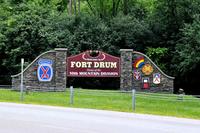The Air Force announced Monday that its F-35A Lightning IIs are flying again, after a recall related to the aircraft's ejection seats grounded the fighter jets late last month.
Martin-Baker, a U.K. manufacturer, identified a problem with some of its cartridge-actuated devices -- explosive components used to launch an ejection seat out of the cockpit -- earlier this year.
The ejection seats impacted hundreds of aircraft across the U.S. military. Air Combat Command, which oversees the majority of the Air Force's F-35s, stopped flying the jets in late July as it began examining all the cartridges. The other services also stood down affected aircraft.
Read Next: Pregnant Airmen Get More Privacy Under New Air Mobility Command Policy
The Air Force has since identified only a handful of potentially problematic parts.
"Across the Air Force, technicians inspected a total of 706 cartridges, which came from 349 F-35s as well as additional supply," Alexi Worley, spokesperson for Air Combat Command, said Monday. "Four cartridges were found to be suspect and have been replaced."
Even though they were replaced, Worley said those four cartridges were later investigated and deemed not defective.
The stand-downs began July 27, starting with the Navy and Marine Corps. Those services grounded an undisclosed number of F/A-18 Hornets, F/A-18E/F Super Hornets and EA-18G Growlers, as well as T-45 Goshawk and F-5 Tiger II training aircraft.
It appears the problem affected the Navy's F-35s as well. Capt. Amy Bauernschmidt, commander of the USS Abraham Lincoln, told reporters during an Aug. 10 roundtable that the parts issue was quickly resolved.
"We thought … we had both FA-18s and F-35s who were affected by it," Bauernschmidt said. "The good news was we were in the Hawaiian operating area, we had the right people and the right parts within a matter of hours. We were able to keep all of those aircraft up and completing the mission as required."
Shortly after the Navy grounded a number of its planes, the 19th Air Force's Air Education and Training Command grounded nearly 300 of its T-38 Talon and T-6 Texan II training planes because they use the same Martin-Baker ejection seat part. On July 28, the command began flying its trainers again after each aircraft passed an ejector seat inspection.
The problem was first discovered on an F-35A back in April at Hill Air Force Base in Utah, but the service didn't ground its jets for three months as it investigated.
Air Combat Command began inspecting a selection of ejector seat cartridges immediately, but the problem became more severe when it was traced back to a failure on the production line.
"Based on the known data at the time, the aircraft was deemed flyable with an acceptable level of risk," Worley said in a statement earlier this month. "As these inspections continued to take place, a higher number of suspect cartridges were found, leading ACC to stand down its fleet to conduct the remainder of the inspections."
Martin-Baker has told Military.com in subsequent statements that the "anomaly remains isolated to a single part number, unique to the F-35 -- for which there is an inspection program in place to return aircraft to flight at the earliest opportunity."
The company did not clarify when asked why other planes were grounded due to the parts recall if the problem affected only the F-35.
-- Thomas Novelly can be reached at thomas.novelly@military.com. Follow him on Twitter @TomNovelly.
Related: Air Force, Navy Ground Hundreds of Planes Due to Faulty Ejection Seat Parts













